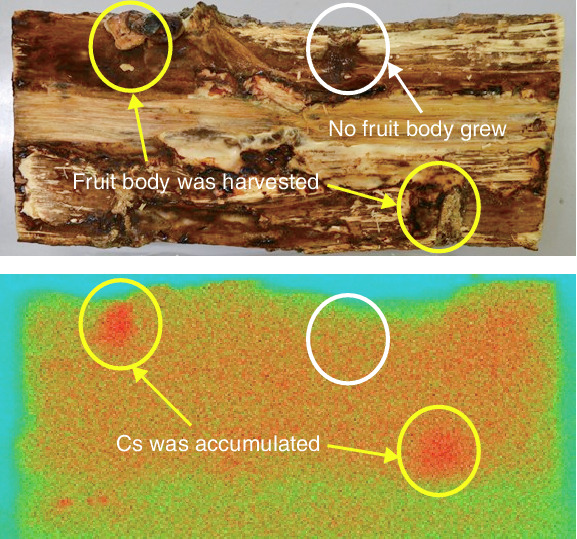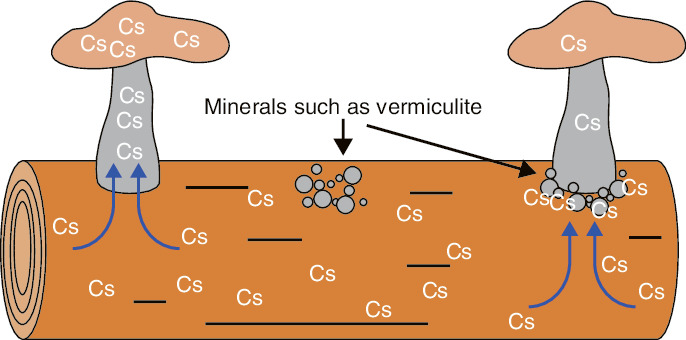
Fig.1-42 Distribution of Cs in a wood log after shiitake mushrooms were cultured and harvested

Fig.1-43 Behavior of Cs during culturing of shiitake mushrooms with wood logs
Wood-log cultivation of shiitake mushrooms is thriving in Fukushima. After the accident at the TEPCO’s Fukushima Daiichi NPS (1F), the production of shiitake mushrooms cultured with wood logs was restricted due to the contamination of such logs by radioactive cesium (Cs). It is known that mushrooms accumulate Cs from contaminated litter and wood logs; however, there is no available research for preventing the accumulation of Cs in the fruit bodies (caps and stems) of mushrooms. In this research, we challenged ourselves to reducing Cs accumulation in mushrooms grown on a contaminated wooden log.
We first grew Shiitake by inoculating the sawdust spawn (mixtures of saw dust shiitake spawn) in a wooden log contaminated with Cs from the 1F to examine the absorption of Cs by mushrooms. The concentration of Cs in the fruit body of the mushrooms was approximately 160 Bq/kg in average, which was almost the same as the Cs concentration, approximately 160 Bq/kg, in the wooden log. Next, we prepared sawdust spawn containing 5 or 10wt% of vermiculite powder with a high sorption capacity for Cs and inoculated it in a wooden log to grow shiitake mushrooms. The concentration of Cs in the fruit body decreased to approximately 80% or 60% of the Cs concentration in the wooden log when the vermiculite content was 5% or 10%, respectively. When zeolite powder was used instead of vermiculite, the Cs concentrations in the fruit body decreased similarly or more. These results demonstrate that the use of vermiculite and zeolite in sawdust spawn reduced the absorption of Cs by the fruit body. After harvesting the fruit body cultured from the vermiculite-containing sawdust spawn, the distribution of Cs in the wooden log was analyzed (Fig.1-42). We observed that Cs was accumulated in the sawdust spawn (shown with yellow circles in Fig.1-42, top figure). On the contrary, Cs did not accumulate in the sawdust spawn from which no fruit body grew (white circle). These results suggest that the Cs dissolved in water in the wood log migrated along with this water when absorbed by the shiitake mushrooms, with a fraction of the Cs being adsorbed on the vermiculite beforehand (Fig.1-43).
These results suggest that reduction of the accumulation of Cs in the fruit body of a shiitake mushroom may be possible by selecting appropriate minerals and adjusting their mixing ratios.